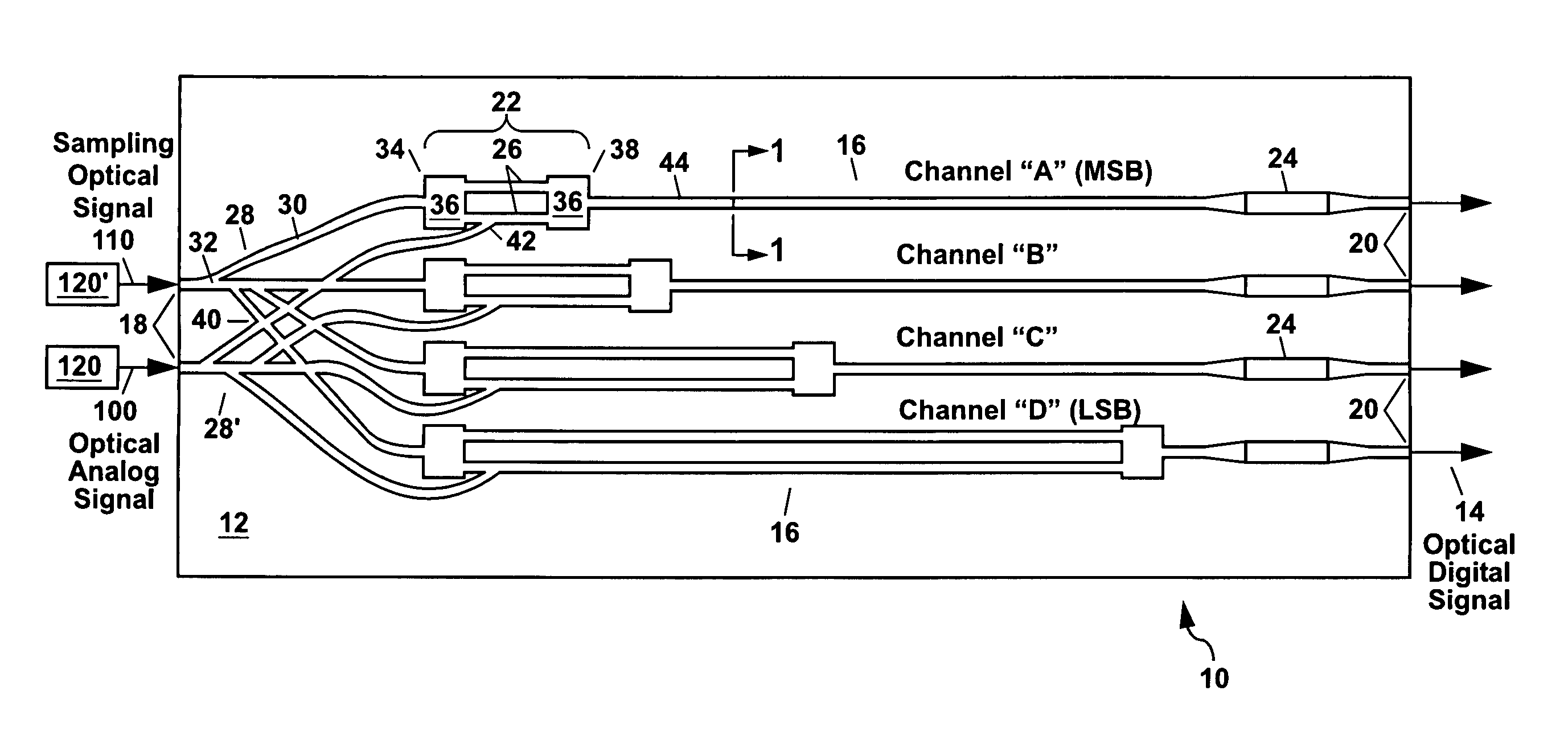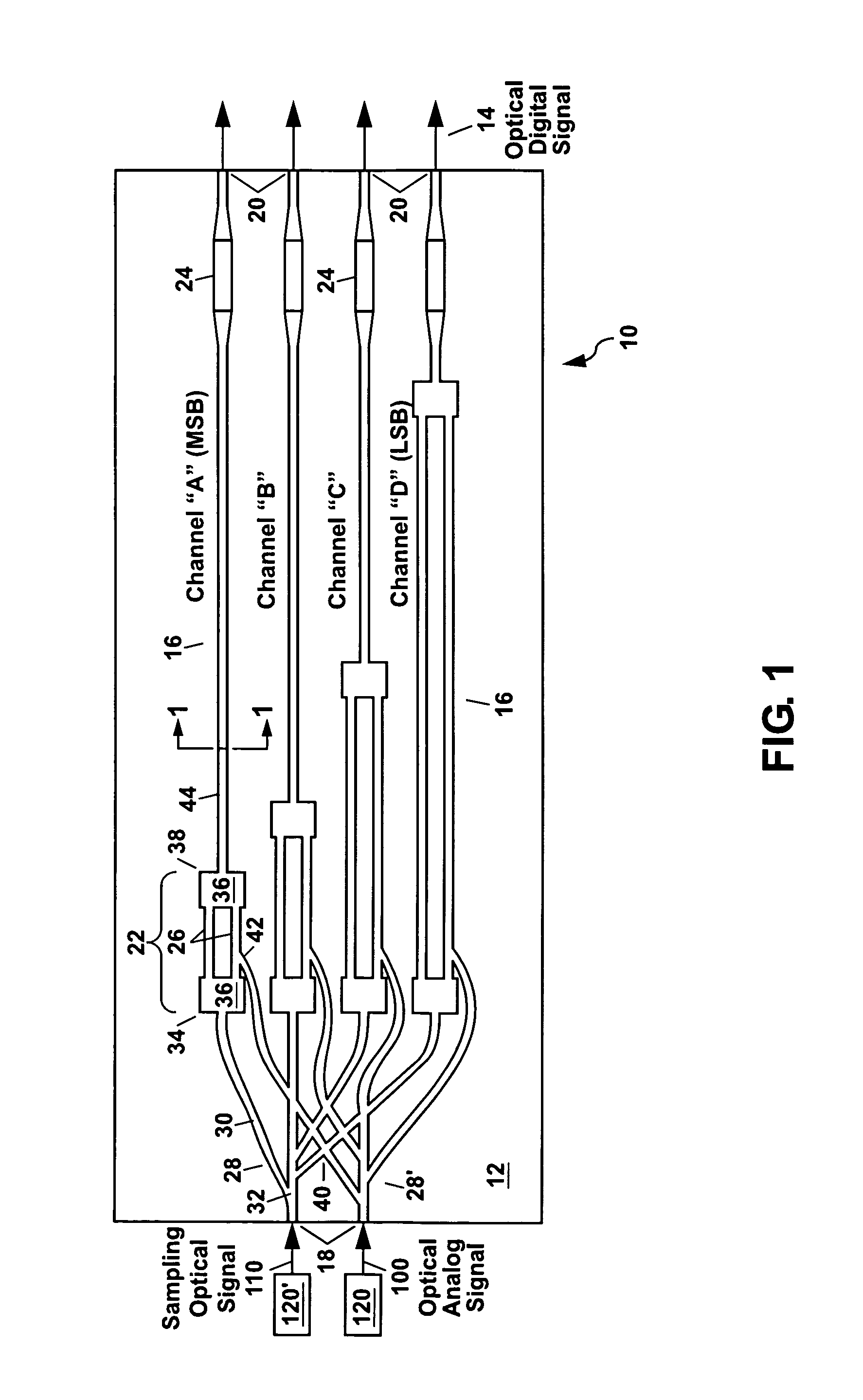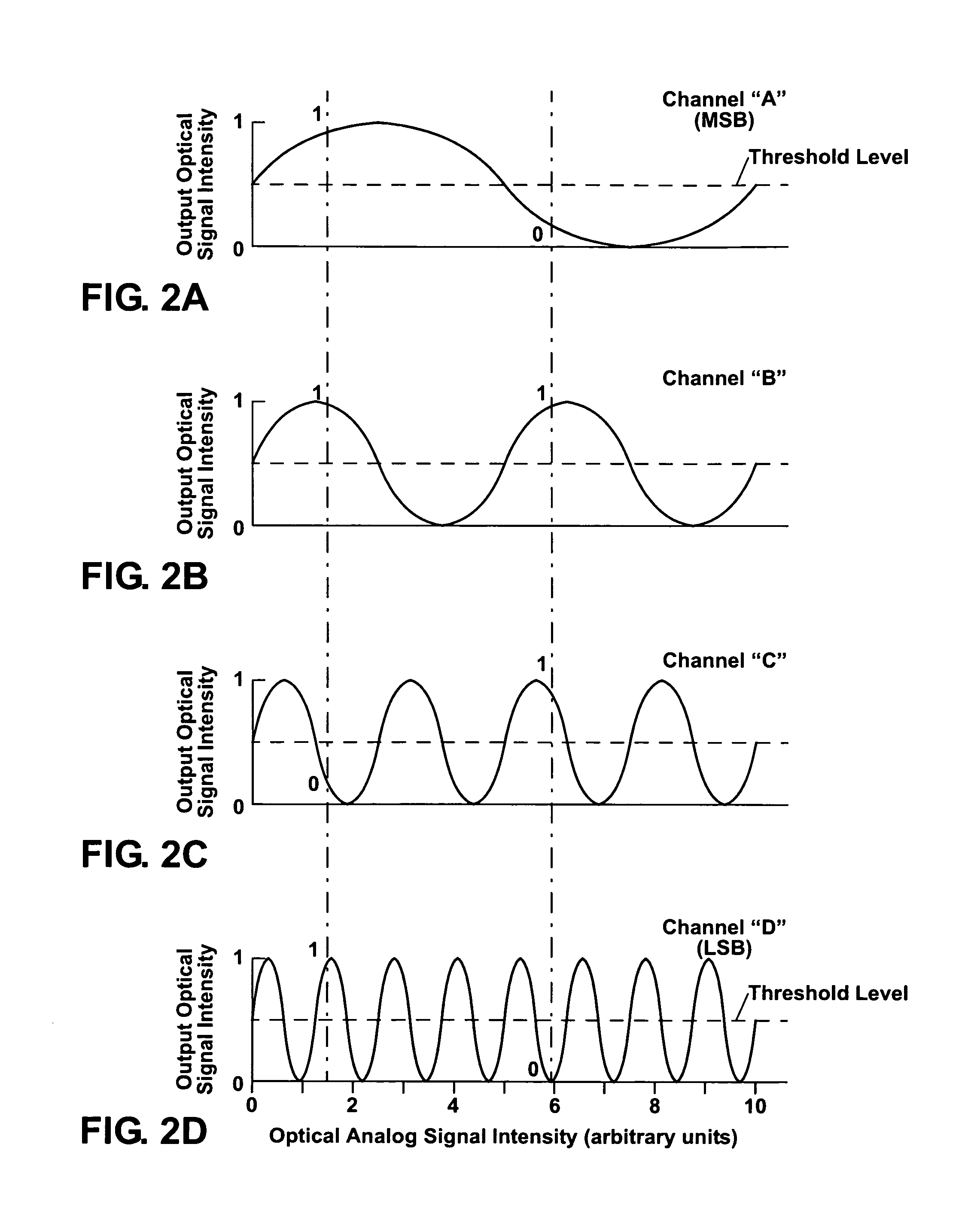Optical analog-to-digital converter
an analog-to-digital converter and optical technology, applied in the direction of code conversion, transmission system, instruments, etc., can solve the problems of reducing the accuracy of electronic adcs, limiting the effective number of electronic adcs, and reducing the frequency with increasing frequency
- Summary
- Abstract
- Description
- Claims
- Application Information
AI Technical Summary
Benefits of technology
Problems solved by technology
Method used
Image
Examples
Embodiment Construction
[0036]Referring to FIG. 1, there is shown a schematic plan view of a first example of the optical analog-to-digital converter (ADC) 10 of the present invention. The optical ADC 10, which can be formed as a photonic integrated circuit (PIC) on a common III-V compound semiconductor substrate 12 such as a gallium arsenide (GaAs) substrate or an indium phosphide (InP) substrate, is useful to generate an optical digital signal 14 output which is a digital representation of an optical analog signal 100 which is input to the optical ADC 10. The optical analog signal 100 can be provided, for example, by an optical fiber or a semiconductor laser 120 and can have a radio-frequency (rf) bandwidth from 100 MHz to 10 GHz or more.
[0037]The optical analog signal 100 is sampled and converted to the optical digital signal 14 at a sampling rate which is defined by a sampling optical signal 110 which acts as a clock for the analog-to-digital conversion. The sampling optical signal 110 can be provided ...
PUM
 Login to View More
Login to View More Abstract
Description
Claims
Application Information
 Login to View More
Login to View More - R&D
- Intellectual Property
- Life Sciences
- Materials
- Tech Scout
- Unparalleled Data Quality
- Higher Quality Content
- 60% Fewer Hallucinations
Browse by: Latest US Patents, China's latest patents, Technical Efficacy Thesaurus, Application Domain, Technology Topic, Popular Technical Reports.
© 2025 PatSnap. All rights reserved.Legal|Privacy policy|Modern Slavery Act Transparency Statement|Sitemap|About US| Contact US: help@patsnap.com



